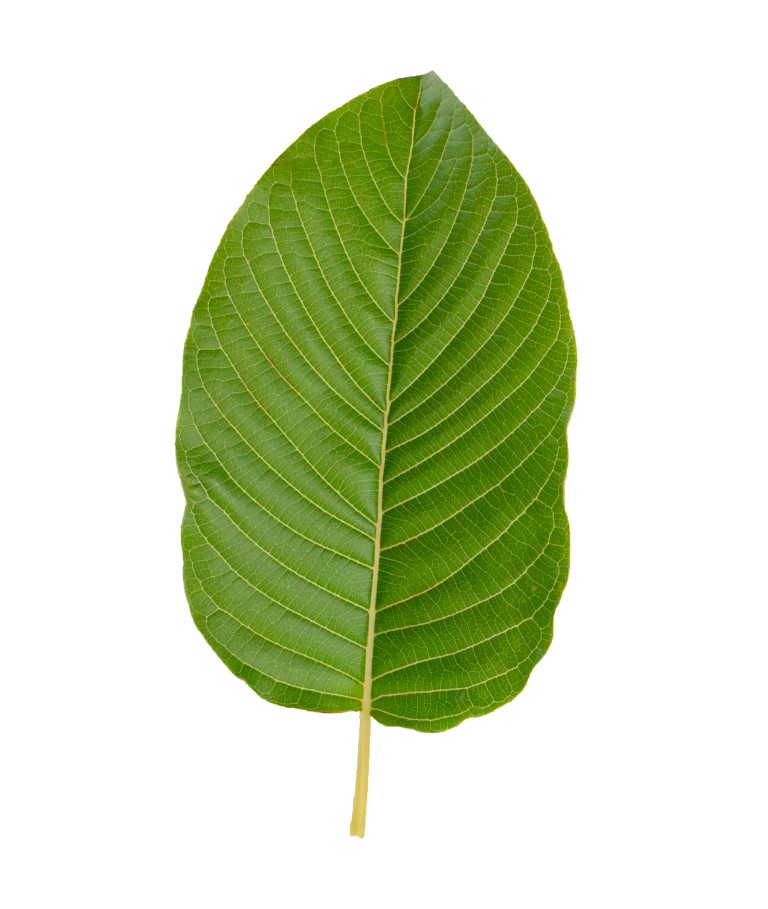So what is Kratom and how does it work?
Kratom, scientifically known as Mitragyna speciosa, is a traditional herb containing various active phytochemicals responsible for different medicinal and recreational activities (psychoactive properties). It is native to the southeastern Asia-Pacific region but has recently become popular in the West. Note that the legalization of Kratom in the West varies from region to region. Interestingly, the use of Kratom as a supplement is increasing day by day in Europe and the United States for many purposes [1]. However, little is known about its therapeutic and pharmacological profiles. That's why we will discuss the most important aspects, potential uses, and possible health threats based on published medical research studies.
Kratom Worldview

Origin
Kratom leaves are rich reservoirs of psychoactive alkaloids, including the four highly pharmacologically active mitragynine, 7-hydroxymitragynine (7-OH- mitragynine), corynantheidine, and speciociliatine. Other trace alkaloids are speciogynine, paynantheine, and mitraphylline, which might provide synergetic properties in Kratom. Traditional consumption of Kratom involves tea, decoction, and grinding leaves to powder for recreational and medical purposes. Also, the raw leaves can be chewed or processed for different dosage forms preparation such as extracts, capsules, etc., for oral ingestion [1, 2].
historical use
Historical uses of Kratom include the weaning off opiate dependence, mitigation of addiction symptoms, and opioid withdrawal management. Moreover, people also consumed Kratom herb for pain reduction, energy, mood, euphoria, and fatigue relief, especially among workers. Besides, traditional uses of Kratom also include as muscle relaxant, antidiarrheal and antispasmodic remedy in the home [1, 2].
Legal Status of Kratom
However, around the 1950s, the potential threat of Kratom addiction and dependence led to a ban or categorization as an illegLeal substance in Malaysia and Thailand. But, in 2018, again, the Thai government allowed its use for medical purposes resulting in the illicit use of Kratom in the country. Notably, Kratom use is highly prevalent in Europe, Japan, and the United States as more than 1800 calls of Kratom poison have been received by US poison centers between 2011 and 2017. Moreover, based on the membership data from American Kratom Association, the estimated number of Kratom users may be approximately 3-5 million in the United States.
Based on serious health concerns, the US Drug Enforcement Administration (DEA) first categorized Kratom as a schedule I drug in 2016 but later listed it on the DEA's Drugs of Concern registry to limit its use or acquisition. Additionally, Kratom possession is criminalized in Arkansas, Rhode Island, Vermont, Wisconsin, Alabama, and Indiana states of America in 2019. Moreover, the US's FDA issued a warning that Kratom "should not be used to treat medical conditions, nor should it be used as an alternative to prescription opioids." However, the Kratom supplements or other dosage forms can legally be obtained from stores or online retailers in the rest of the states. Among the reasons for limitation, the top issue was that people started using Kratom for opioid dependence as an alternative during the opioid abuse epidemic. Interestingly, the Kratom sale is allowed in Europe except for Romania, Latvia, Poland, Ireland, Denmark, Finland, and Lithuania [1, 2].
Therapeutic Potential-Analgesic Properties
Kratom has been extensively researched for its stimulant and opioid-like properties as it provides pain relief and a relaxing effect. Both mitragynine and 7-OH-mitragynine alkaloids act on the opioid receptors such as for Mu (µ-), Delta (δ-), and Kappa (κ-) receptors, providing an analgesic activity or pain-relieving properties. While other researchers reported mitragynine and 7-OH-mitragynine alkaloids as mixed opioid receptors antagonist/agonists that also possess indirect analgesic properties. It is important to know that the 7-OH-mitragynine alkaloid in the Kratom shows a strong binding affinity with opioid receptors, providing 13 times higher potency than morphine [1, 3]. Interestingly, based on the molecular mechanism, the mitragynine and 7-OH-mitragynine in the Kratom can be processed to design a potent and well-tolerated alternative to opioid agonists. Additionally, animal studies showed that the mitragynine constituent in the Kratom help delays the development of opioid tolerance. The indirect analgesic property of Kratom constituents is attributed to the modulation of pro-inflammatory cytokines, including inhibition of COX-2 and PGE [1, 2].
Therapeutic Potential-Improve Mood and Help Mental health
Although there are no proper randomized control trials on Kratom use, research studies reported that Kratom interferes with adrenergic, dopaminergic, and serotonergic pathways, providing relief and anxiolytic activity. It helps relieve depression and stress, improving mood and mental health [4]. An anonymous online survey reported that people in the United States use Kratom for both acute and chronic pain and help emotional and mental conditions. Moreover, the users also reported a reduction in stress, anxiety, depression, and trauma symptoms, plus Kratom increased focus and energy. It is important to know that side effects of Kratom include nausea, dizziness, constipation, sedation, drowsiness, loss of appetite, and mild withdrawal effects [1, 5].
Potential risks of Kratom use
Medical research studies reported that Kratom could cause potential side effects, including addiction and dependence, and impair cognitive function. However, a recent research study showed that Kratom does not impair regular users' memory, cognition, attention, and motor function [6]. The high mitragynine content and its active metabolite, 7-OH-mitragynine, increase the risk of toxicity and dependence. Moreover, chronic ingestion may result in reward-seeking behavior and punishment tolerance. Studies also reported that Kratom (synthetic mitragynine) could cause organ dysfunction, liver toxicity, and seizures [1, 2]. However, extensive human studies are needed in this regard, to conclude the potential side effects of Kratom consumption.
References
1. Eastlack, S.C., E.M. Cornett, and A.D. Kaye, Kratom—Pharmacology, clinical implications, and outlook: a comprehensive review. Pain and therapy, 2020. 9(1): p. 55-69.
2. Veltri, C. and O. Grundmann, Current perspectives on the impact of Kratom use. Substance abuse and rehabilitation, 2019. 10: p. 23.
3. Sharma, A. and C.R. McCurdy, Assessing the therapeutic potential and toxicity of Mitragyna speciosa in opioid use disorder. 2021, Taylor & Francis. p. 255-257.
4. Hartley, C., M. Bulloch, and S.R. Penzak, Clinical Pharmacology of the Dietary Supplement, Kratom (Mitragyna speciosa). The Journal of Clinical Pharmacology, 2021.
5. Prevete, E., et al., Exploring the use of Kratom (Mitragyna speciosa) via the YouTube data tool: A novel netnographic analysis. Emerging Trends in Drugs, Addictions, and Health, 2021. 1: p. 100007.
6. Singh, D., et al., Long-term cognitive effects of Kratom (Mitragyna speciosa Korth.) use. Journal of psychoactive drugs, 2019. 51(1): p. 19-27.
